Minimalist Decor: A True Passion for Straight Lines
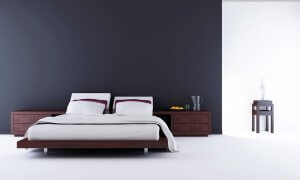
The minimalist decor style and its passion for straight lines is still a huge trend. It helps us create diaphanous spaces where there’s almost a scarcity of color and a drastic reduction in decorative elements. The decor searches for beauty in its minimal expression.
While the artistic trend started in the 1960s, minimalism didn’t actually go by its current name until three decades later. The minimalist slogan is “more is less”, started by the functional architect Mies Van Der Rohe.
Functionalism is essentially a pillar of this decor style. Its rationalist standpoint uses an element’s functionality, or lack thereof, a determining factor for whether it’s relevant or not. Following that line, anything that’s unnecessary is eliminated.
The elemental aesthetics of minimalism
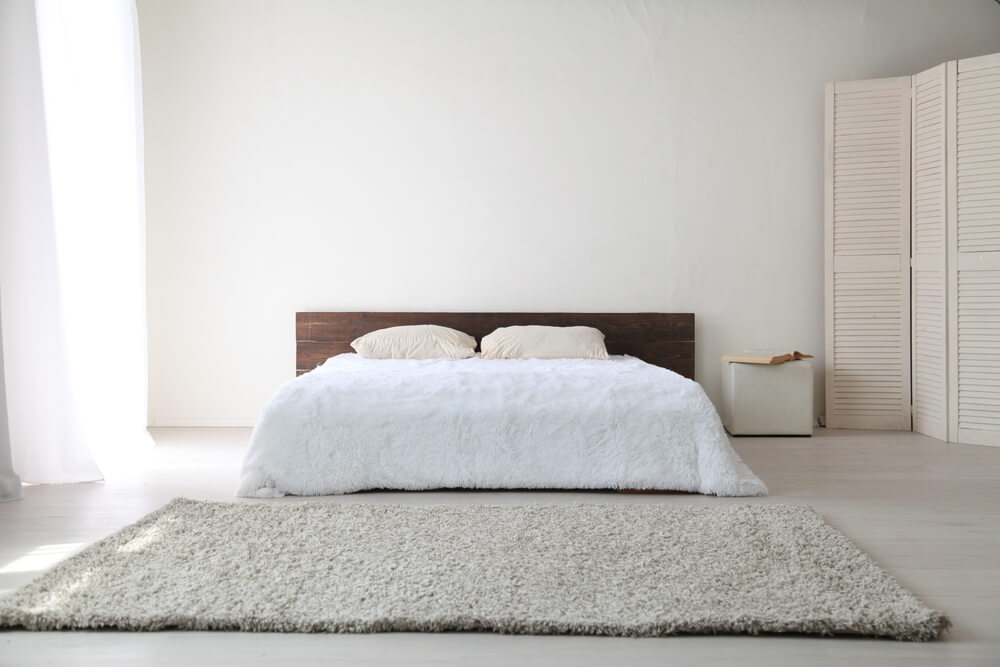
Minimalist decor reduces furniture pieces, accessories and even shapes and colors to a minimum. The austerity creates simple, open spaces that are full of energy.
In these settings, every piece plays a big role as they draw maximum attention. In light of that, prioritizing the pieces is an essential step.
Space reigns on high
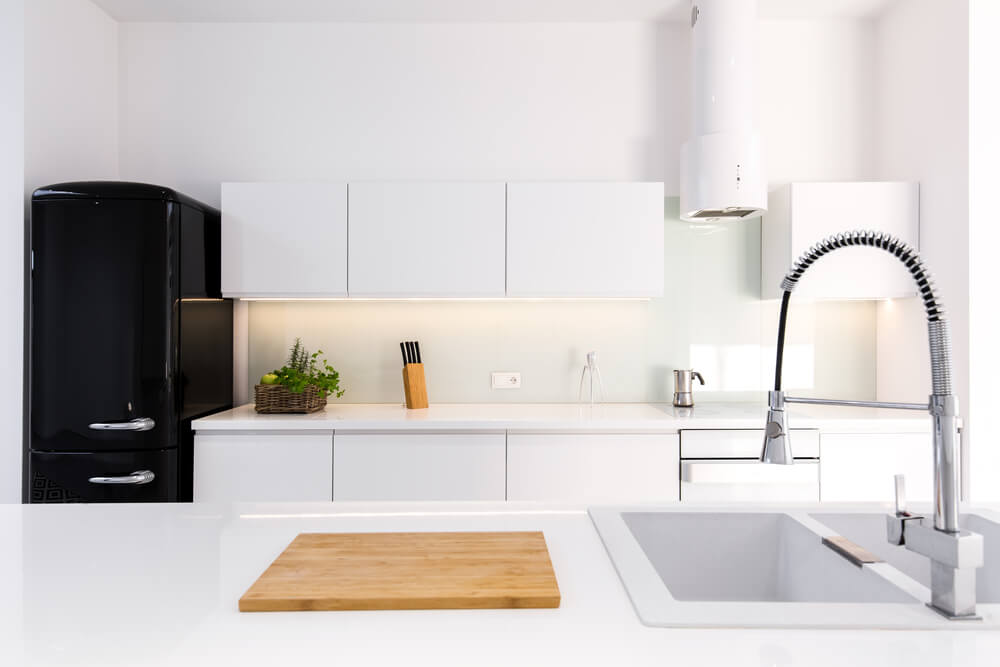
Minimalist decor focuses on basic geometrical shapes, different planes and a lack of decorative accessories. Space is more important than objects. As a result, this decor style eliminates excess to give space all of the attention: the fewer elements there are, the more powerful the minimalist decor.
The continuity between different areas also makes minimalism more impressive. This is exactly why the decor style is so popular in lofts.
Minimalist decor keys
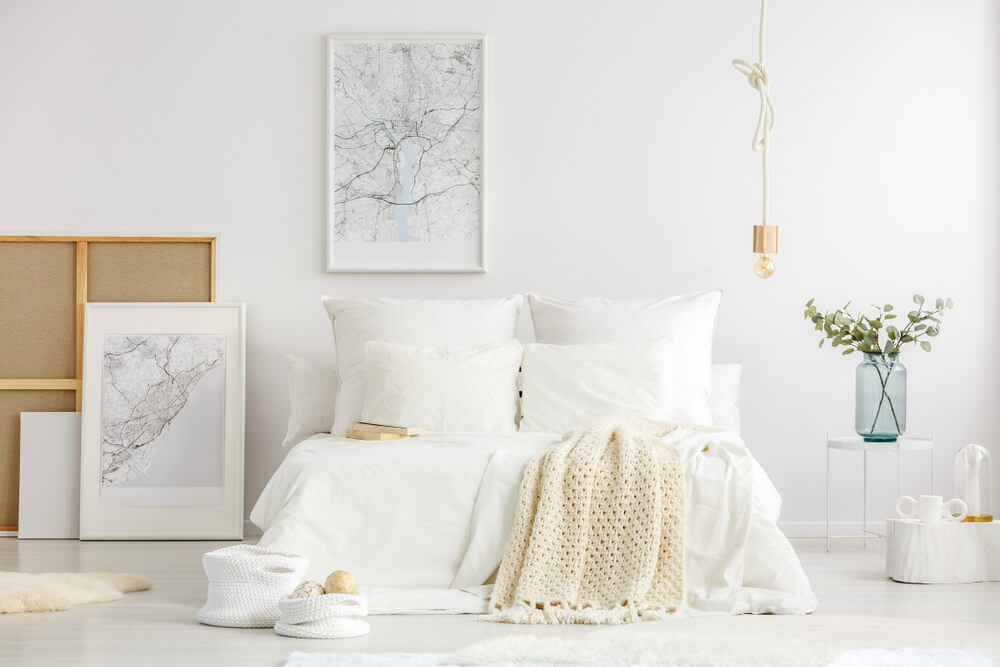
Minimalism is vanguard and its distinctive characteristics make it more suitable for modern buildings. But that’s not to say it would never work in older settings.
Minimalist spaces need clean, continuous walls, floors, and ceilings– or for any surface, vertical or horizontal, for that matter.
You should always use materials of the highest quality possible, including for furniture and simple accessory elements. We recommend industrial finishes, such as cement, concrete or steel. Similarly, laminates will work fine as well.
Another great material for minimalist decor is wood in addition to certain types of stone. Whatever you choose, make sure that your material is as neutral as possible in order to create the right visual effect.
Furniture and a passion for simplicity
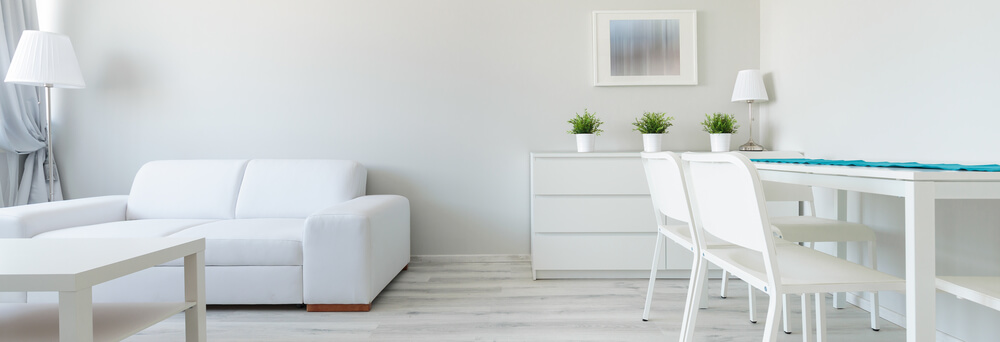
Do you know which furniture pieces work best for these kinds of settings? Remember, minimalist furniture is simple yet functional but that doesn’t mean a lack of design.
These simple pieces are geometrically perfect. They boast high quality and strict design standards that only use flat surfaces and straight lines. No embellishment is allowed.
For the most part, minimalism uses modest colors. If a piece is upholstered, you’ll never see patterns or prints.
Couches and stools usually have square, flat backs. Decorative pillows aren’t common, but if they’re there, they’re minimal and very basic. Minimalism has no place for fringes, bows or pleats.
Chairs also feature long, straight lines. And tables are wonderfully simple, too. A great example of minimalist furniture is a wooden cube side table.
Color and the power of monochrome
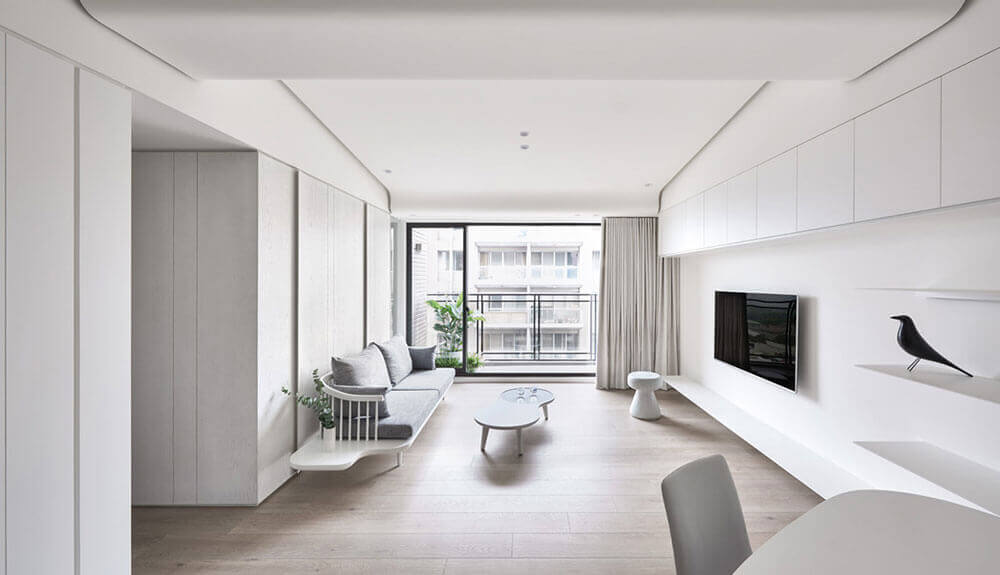
Minimalism uses a monochrome palette for floors, ceilings, and walls. And of course, white is the backbone of the decor.
White evokes purity and relaxation, unlike any other color. It helps create a sense of spaciousness and bareness.
Minimalist decor avoids colors that are too bright. As a result, colors that could substitute white are often neutral and light: gray, beige, pastels…
Designers create points of visual interest by adding pops of color through furniture and artwork. While they use colors that create contrast, they’ll never create a loud decor.
Lighting: an important component
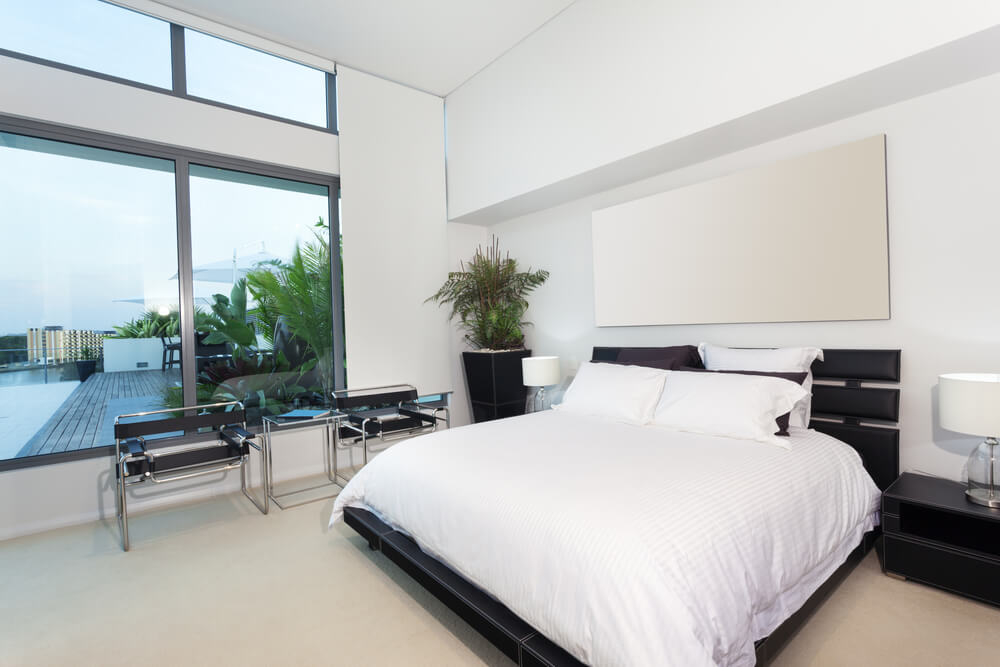
Minimalist spaces usually feature big windows to flood the space with natural light. As for artificial light, try soft or indirect lighting. You can create it with standing, wall or line lights.
Screen and standing lamps are wonderfully simple while wall lamps also keep decor to a minimum. So then, do you feel like minimalist decor could be for you?
The minimalist decor style and its passion for straight lines is still a huge trend. It helps us create diaphanous spaces where there’s almost a scarcity of color and a drastic reduction in decorative elements. The decor searches for beauty in its minimal expression.
While the artistic trend started in the 1960s, minimalism didn’t actually go by its current name until three decades later. The minimalist slogan is “more is less”, started by the functional architect Mies Van Der Rohe.
Functionalism is essentially a pillar of this decor style. Its rationalist standpoint uses an element’s functionality, or lack thereof, a determining factor for whether it’s relevant or not. Following that line, anything that’s unnecessary is eliminated.
The elemental aesthetics of minimalism

Minimalist decor reduces furniture pieces, accessories and even shapes and colors to a minimum. The austerity creates simple, open spaces that are full of energy.
In these settings, every piece plays a big role as they draw maximum attention. In light of that, prioritizing the pieces is an essential step.
Space reigns on high

Minimalist decor focuses on basic geometrical shapes, different planes and a lack of decorative accessories. Space is more important than objects. As a result, this decor style eliminates excess to give space all of the attention: the fewer elements there are, the more powerful the minimalist decor.
The continuity between different areas also makes minimalism more impressive. This is exactly why the decor style is so popular in lofts.
Minimalist decor keys

Minimalism is vanguard and its distinctive characteristics make it more suitable for modern buildings. But that’s not to say it would never work in older settings.
Minimalist spaces need clean, continuous walls, floors, and ceilings– or for any surface, vertical or horizontal, for that matter.
You should always use materials of the highest quality possible, including for furniture and simple accessory elements. We recommend industrial finishes, such as cement, concrete or steel. Similarly, laminates will work fine as well.
Another great material for minimalist decor is wood in addition to certain types of stone. Whatever you choose, make sure that your material is as neutral as possible in order to create the right visual effect.
Furniture and a passion for simplicity

Do you know which furniture pieces work best for these kinds of settings? Remember, minimalist furniture is simple yet functional but that doesn’t mean a lack of design.
These simple pieces are geometrically perfect. They boast high quality and strict design standards that only use flat surfaces and straight lines. No embellishment is allowed.
For the most part, minimalism uses modest colors. If a piece is upholstered, you’ll never see patterns or prints.
Couches and stools usually have square, flat backs. Decorative pillows aren’t common, but if they’re there, they’re minimal and very basic. Minimalism has no place for fringes, bows or pleats.
Chairs also feature long, straight lines. And tables are wonderfully simple, too. A great example of minimalist furniture is a wooden cube side table.
Color and the power of monochrome

Minimalism uses a monochrome palette for floors, ceilings, and walls. And of course, white is the backbone of the decor.
White evokes purity and relaxation, unlike any other color. It helps create a sense of spaciousness and bareness.
Minimalist decor avoids colors that are too bright. As a result, colors that could substitute white are often neutral and light: gray, beige, pastels…
Designers create points of visual interest by adding pops of color through furniture and artwork. While they use colors that create contrast, they’ll never create a loud decor.
Lighting: an important component

Minimalist spaces usually feature big windows to flood the space with natural light. As for artificial light, try soft or indirect lighting. You can create it with standing, wall or line lights.
Screen and standing lamps are wonderfully simple while wall lamps also keep decor to a minimum. So then, do you feel like minimalist decor could be for you?







